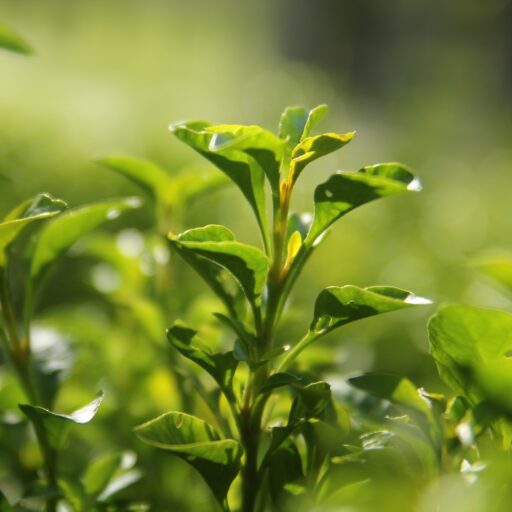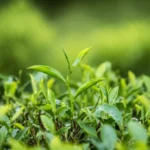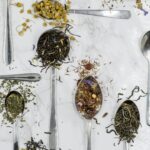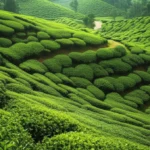Support our educational content for free when you purchase through links on our site. Learn more
10 Sustainable Tea Gardening Practices to Grow a Greener Garden 🌱 (2025)
Did you know that the humble tea leaf you brew every morning can also be a powerful ally in creating a sustainable garden? At Growing Teas™, we’ve spent years cultivating tea the eco-friendly way, and the secret lies not just in the soil or water, but in embracing a holistic approach that nurtures the entire ecosystem. From turning used green tea leaves into nutrient-rich mulch to inviting beneficial insects that wage war on pests, sustainable tea gardening is a blend of tradition, science, and a dash of creativity.
In this article, we’ll walk you through 10 proven sustainable tea gardening practices that will transform your garden into a thriving, eco-friendly oasis. Curious how a simple compost tea can boost your plants’ health or why shade-grown tea is more than just a fancy term? Stick around — we’ll spill all the secrets, share real-life stories from our tea fields, and even spotlight specialty teas like Sencha Hatsuzumi that owe their exquisite flavor to sustainable cultivation. Ready to brew a greener future? Let’s dig in!
Key Takeaways
- Sustainable tea gardening is about nurturing soil, conserving water, and fostering biodiversity to create a resilient ecosystem.
- Used tea leaves make excellent mulch and compost ingredients, enriching soil naturally and reducing waste.
- Integrated Pest Management (IPM) and beneficial insects reduce the need for chemical pesticides, protecting both plants and the environment.
- Water-saving techniques like drip irrigation and rainwater harvesting are essential for eco-friendly tea cultivation.
- Crop diversification and shade management improve plant health and flavor, as seen in specialty teas like Sencha Hatsuzumi.
- Starting your own sustainable tea garden at home is achievable with simple tools, organic soil amendments, and companion planting.
Ready to get your hands dirty and your garden buzzing with life? Keep reading to discover how to implement these practices step-by-step!
Table of Contents
- ⚡️ Quick Tips and Facts on Sustainable Tea Gardening
- 🌱 The Roots of Sustainable Tea Gardening: History and Evolution
- 🌿 Understanding Sustainable Tea Gardening: Principles and Practices
- 1️⃣ Top 10 Sustainable Tea Gardening Practices for Thriving Gardens
- 1.1 Soil Health Management: Composting and Organic Amendments
- 1.2 Water Conservation Techniques in Tea Cultivation
- 1.3 Integrated Pest Management (IPM) for Tea Plants
- 1.4 Shade Management and Agroforestry Benefits
- 1.5 Crop Diversification and Companion Planting
- 1.6 Using Green Tea Leaves as Mulch and Soil Enhancers
- 1.7 Making and Applying Compost Tea for Tea Gardens
- 1.8 Eco-Friendly Fertilizers and Natural Amendments
- 1.9 Sustainable Harvesting Techniques to Preserve Plant Health
- 1.10 Waste Reduction and Recycling in Tea Gardens
- 🌎 Environmental Impact: How Sustainable Tea Gardening Protects Our Planet
- 🍵 Specialty Tea Varieties and Sustainable Cultivation: Spotlight on Sencha Hatsuzumi
- 💧 Water Management Innovations: Drip Irrigation and Rainwater Harvesting
- 🐞 Beneficial Insects and Natural Pest Control in Tea Gardens
- 🌾 Soil Testing and Monitoring for Sustainable Tea Farming
- 👩🌾 Farmer Stories: Real-Life Experiences with Sustainable Tea Gardening
- 📈 Economic Benefits of Sustainable Tea Gardening Practices
- 🛠 Tools and Equipment for Sustainable Tea Gardeners
- 🌟 Quick Guide: Starting Your Own Sustainable Tea Garden at Home
- 🔚 Conclusion: Brewing a Greener Future with Sustainable Tea Gardening
- 🔗 Recommended Links for Sustainable Tea Gardening Resources
- ❓ FAQ: Your Burning Questions About Sustainable Tea Gardening Answered
- 📚 Reference Links and Further Reading
Here are the main content sections of your comprehensive blog post on sustainable tea gardening practices.
⚡️ Quick Tips and Facts on Sustainable Tea Gardening
Welcome, tea lovers! We’re the growers at Growing Teas™, and if there’s one thing we’ve learned over muddy boots and countless cups of freshly brewed tea, it’s that a truly great cup starts with a healthy planet. Sustainable tea gardening isn’t just a buzzword for us; it’s the secret ingredient in every leaf we cultivate.
Before we dive deep into the rich, loamy soil of sustainable practices, let’s spill the tea with some quick facts and tips to get you started. Think of this as the quick steep before the full, flavorful infusion!
| Quick Tip / Fact 💡 | The Sustainable Scoop 🌍 |
|---|---|
| Used Tea Leaves = Gold | Don’t toss those used leaves! They are packed with nitrogen, which is a fantastic natural fertilizer for your garden soil. |
| Tea for Acidity | Some plants, like hydrangeas, ferns, and azaleas, thrive in slightly acidic soil. As the first YouTube video on this topic explains, burying used tea bags around their base can help lower the soil’s pH naturally. |
| Pest Off, Naturally! | A cooled, brewed green tea can act as a natural pesticide. The tannins that give tea its characteristic astringency can help deter pests like aphids from munching on your precious plants. |
| Compost Booster | Used tea leaves are a “green” material in your compost pile, adding that crucial nitrogen to balance the “brown” carbon materials and speed up decomposition. |
| Water Wisely | Sustainable tea gardens prioritize smart water use through methods like drip irrigation, which can reduce water consumption by up to 70% compared to conventional methods. |
| Biodiversity is Key | A sustainable garden is a bustling ecosystem, not a sterile monoculture. Planting a variety of crops and native plants encourages beneficial insects that act as natural pest control. |
So, you’re already seeing that your daily tea ritual could be the start of a beautiful friendship with your garden. But have you ever wondered how we got here? How did we stray from these earth-friendly methods only to find our way back? Let’s take a trip back in time.
🌱 The Roots of Sustainable Tea Gardening: History and Evolution
Tea cultivation is an ancient art, steeped in tradition. For centuries, tea was grown in harmony with nature, often in misty mountainsides that were part of a larger, thriving ecosystem. If you want to learn more about this journey, our History of Tea section is a great place to start.
Historically, tea gardens were inherently sustainable. They were small, biodiverse plots where farmers understood the intricate dance between their plants, the soil, and the surrounding environment. There were no chemical fertilizers or synthetic pesticides. Instead, farmers relied on natural cycles, composting, and the wisdom passed down through generations.
The 20th century brought about a revolution in agriculture, and tea farming was no exception. The push for higher yields led to widespread monoculture—vast fields of nothing but tea plants. This approach, while productive in the short term, often depleted the soil, increased reliance on chemical inputs, and reduced biodiversity.
But now, the tea world is experiencing a renaissance! There’s a growing movement back to the roots of sustainable farming. Companies and growers are realizing that the old ways were often the best ways. Take the philosophy of a garden like Teatulia, which defines sustainability as meeting “the needs of the present without compromising the ability of future generations to meet their own needs.” This isn’t just about the environment; it’s a holistic approach that includes social and economic well-being, ensuring that the land and the people who tend it can thrive together for years to come.
🌿 Understanding Sustainable Tea Gardening: Principles and Practices
So, what does it really mean to be a sustainable tea gardener? It’s more than just being “eco-friendly.” It’s a mindset, a philosophy built on a few core principles. Whether you’re interested in Green Tea Cultivation or starting your own backyard Herbal Tea Planting, these pillars are universal.
Here at Growing Teas™, we live by these four tenets:
- Soil is Sacred 🙏: We treat our soil not as dirt, but as a living, breathing ecosystem. The goal is to feed the soil, not just the plant. Healthy soil, rich in organic matter and microbial life, produces healthier, more resilient tea plants with more complex flavors.
- Water is Precious 💧: We view water as a finite resource. Sustainable practices focus on using water efficiently through techniques like rainwater harvesting and drip irrigation, ensuring every drop counts.
- Biodiversity is Beautiful 🦋: A sustainable tea garden is a vibrant community. By encouraging a variety of plants and animals, we create a balanced ecosystem where pests are controlled naturally and pollinators thrive. Monocultures are a big ❌ in our book.
- Waste is a Resource ♻️: In nature, there is no waste. We apply this principle by composting plant trimmings, reusing water, and turning every “output” into an “input.” It’s about creating a closed-loop system where everything has a purpose.
Adopting these principles doesn’t just help the planet; it leads to a superior cup of tea. A plant that has to work a little harder, drawing nutrients from rich soil and interacting with a diverse environment, develops a depth of character and flavor that you just can’t replicate with chemical shortcuts.
1️⃣ Top 10 Sustainable Tea Gardening Practices for Thriving Gardens
Ready to get your hands dirty? We thought so! Here are the top 10 sustainable practices we use in our gardens—and that you can adapt for your own, whether you have acres of land or a few pots on a balcony.
1.1 Soil Health Management: Composting and Organic Amendments
Forget synthetic fertilizers! The key to a thriving tea garden is building healthy soil.
- Composting: This is non-negotiable for us. All our garden and kitchen scraps (especially used tea leaves!) go into our compost piles. This black gold is teeming with microbial life and provides a slow-release source of essential nutrients.
- Cover Crops: As the folks at Chestnut Herbs point out, some plants are “living manure.” We plant cover crops like Red Clover (Trifolium pratense) between our tea rows. They fix nitrogen in the soil, prevent erosion, and can be tilled back in to add organic matter. ✅
- Organic Amendments: We supplement our compost with things like worm castings, aged manure, and bone meal to ensure our soil has a balanced diet.
1.2 Water Conservation Techniques in Tea Cultivation
Tea plants can be thirsty, but that doesn’t mean we have to be wasteful.
- Drip Irrigation: This is our go-to method. It delivers water directly to the plant’s roots, minimizing evaporation and runoff.
- Mulching: A thick layer of organic mulch (like wood chips or straw) around the base of plants helps retain soil moisture, suppress weeds, and regulate soil temperature.
- Rainwater Harvesting: We collect rainwater from rooftops and use it to irrigate our gardens, reducing our reliance on municipal water sources.
1.3 Integrated Pest Management (IPM) for Tea Plants
We believe in working with nature, not against it. IPM is a holistic approach to pest control that prioritizes prevention and natural solutions.
- Beneficial Insects: We actively encourage predators like ladybugs and lacewings that feast on common pests like aphids.
- Natural Sprays: If an infestation does occur, we reach for natural solutions. As noted by Senbird Tea, a simple spray made from cooled green tea can be effective. “The tannins in green tea can help to deter pests from feeding on your plants.”
- Trap Crops: We sometimes plant a small patch of a crop that pests love (like nasturtiums for aphids) away from our tea plants to lure them away.
1.4 Shade Management and Agroforestry Benefits
Many of the world’s finest teas, like Japanese Gyokuro, are shade-grown. Growing tea plants under the canopy of larger trees (agroforestry) has incredible benefits:
- It mimics the natural environment where tea first grew.
- The shade reduces stress on the tea plants, leading to higher levels of chlorophyll and L-theanine (the amino acid responsible for that savory, umami flavor).
- The trees provide habitat for birds and beneficial insects and their fallen leaves create a natural mulch.
1.5 Crop Diversification and Companion Planting
Monoculture is boring and bad for the environment! We intersperse our tea plants with a variety of other crops.
- Companion Plants: We plant herbs like peppermint and chamomile among our tea bushes. They can help repel pests and attract pollinators. This is a great tip for anyone interested in Herbal Tea Planting.
- Nitrogen Fixers: Legumes like beans and peas are planted to naturally enrich the soil with nitrogen.
- Resilience: A diverse garden is a resilient garden. If one crop struggles, others will thrive, creating a stable and productive ecosystem.
1.6 Using Green Tea Leaves as Mulch and Soil Enhancers
This is one of the easiest and most effective ways to practice sustainability. “Using used green tea leaves is a fantastic way to reduce waste and give your garden a nutrient boost.”
How to do it, step-by-step:
- Collect & Dry: After enjoying your tea, collect the used leaves. It’s crucial to spread them out on a tray and let them dry completely to prevent mold.
- Sprinkle Liberally: Once dry, simply sprinkle the leaves around the base of your plants.
- Work it In: Gently work the leaves into the top layer of soil. As they break down, they’ll release nitrogen, improve soil structure, and even help deter some pests.
- Acid-Loving Plants: For plants like azaleas and blueberries, you can even bury entire used tea bags (make sure they’re plastic-free!) around the root zone to gently increase soil acidity. [cite: #featured-video]
1.7 Making and Applying Compost Tea for Tea Gardens
This isn’t a tea for you to drink, but your plants will gulp it down! Compost tea is a liquid fertilizer teeming with beneficial microbes.
Our Simple Recipe:
- Take a bucket and fill it with non-chlorinated water (let tap water sit out for 24 hours).
- Place a few handfuls of high-quality, finished compost into a mesh bag or an old pillowcase.
- Steep the “compost bag” in the water for 24-48 hours. For an extra boost, add an aquarium bubbler to aerate the mixture.
- Dilute the resulting “tea” until it’s the color of weak tea and use it to water your plants. This provides an immediate nutrient boost and inoculates the soil with beneficial life.
This is a more advanced version of the simple liquid fertilizer you can make by just steeping used tea bags in water, as mentioned in the featured video.
1.8 Eco-Friendly Fertilizers and Natural Amendments
Beyond compost, we use a variety of natural amendments to meet our plants’ specific needs.
| Amendment | Primary Nutrient | Best For |
|---|---|---|
| Kelp Meal | Micronutrients, Potassium | Overall plant health and stress resistance. |
| Worm Castings | Balanced Nutrients | A fantastic all-purpose fertilizer and soil conditioner. |
| Alfalfa Meal | Nitrogen, Growth Hormones | Giving plants a quick growth boost. |
| Epsom Salts | Magnesium, Sulfur | Improving chlorophyll production and nutrient uptake. |
1.9 Sustainable Harvesting Techniques to Preserve Plant Health
How you harvest is just as important as how you grow. Over-harvesting can stress a plant and reduce its lifespan.
- The “Two Leaves and a Bud” Rule: For high-quality tea, we only pluck the top two tender leaves and the unopened leaf bud. This encourages new growth and doesn’t tax the plant’s resources.
- Regular, Light Plucking: Instead of one massive harvest, we do several light pluckings throughout the season. This is similar to the advice for herbal gardeners to pinch off tips to encourage bushier growth.
- Rest Periods: We allow our plants to have natural rest periods, especially during extreme weather, to recover and store energy.
1.10 Waste Reduction and Recycling in Tea Gardens
A sustainable garden aims for a closed loop.
- Pruning for Mulch: All the branches and leaves from our annual pruning go right back onto the soil as mulch or into the compost pile.
- Water Recycling: We use greywater from our washing stations (using only biodegradable soaps) to water non-edible landscape plants.
- Minimal Packaging: We choose suppliers who use minimal and recyclable packaging for our tools and amendments.
🌎 Environmental Impact: How Sustainable Tea Gardening Protects Our Planet
Every time you choose a sustainably grown tea, you’re casting a vote for a healthier planet. The impact goes far beyond your garden gate.
- Carbon Sequestration: Healthy, organic-rich soils are incredible carbon sinks. By using no-till methods and constantly adding compost, sustainable farms pull carbon dioxide out of the atmosphere and lock it in the soil.
- Protecting Waterways: Conventional agriculture is a major source of water pollution from fertilizer and pesticide runoff. Sustainable practices prevent this, protecting rivers, lakes, and the wildlife that depends on them.
- Boosting Biodiversity: By avoiding harsh chemicals and planting a variety of species, we create safe havens for pollinators like bees and butterflies, as well as birds and other beneficial creatures. This is crucial, as a UN report highlights the alarming rate of species extinction due to human activities.
🍵 Specialty Tea Varieties and Sustainable Cultivation: Spotlight on Sencha Hatsuzumi
To see how these practices translate into the final cup, let’s look at a specific tea: Sencha Hatsuzumi. This is a “first flush” Sencha, meaning it’s made from the very first, most tender leaves of spring.
The exceptional quality of this tea is directly linked to sustainable cultivation. The plants are meticulously cared for throughout the winter, with rich compost applied to the soil to ensure they have ample nutrients for that first burst of spring growth. Because no synthetic pesticides are used, the delicate leaves are pure and untainted. The careful, selective plucking of only the finest leaves ensures that the plant remains healthy for subsequent harvests. This is a perfect example of how sustainable Green Tea Cultivation results in a superior product.
💧 Water Management Innovations: Drip Irrigation and Rainwater Harvesting
Let’s take a closer look at water, because it’s a game-changer.
| Feature | Drip Irrigation | Conventional Sprinklers |
|---|---|---|
| Efficiency | 90-95% | 50-70% |
| Water Placement | Directly at the root zone | Broadcast over a wide area |
| Evaporation Loss | Very Low | High, especially on windy days |
| Weed Growth | Minimized (only plant gets water) | Encouraged between plants |
| Foliage Disease | Reduced (leaves stay dry) | Increased (wet leaves are prone to fungus) |
Rainwater harvesting is another key component. We use large cisterns to capture runoff from our buildings. This water is naturally soft, free of chlorine, and at the perfect ambient temperature for plants. It’s a simple, low-tech solution that has a massive impact on our water footprint.
👉 Shop Drip Irrigation Systems on:
🐞 Beneficial Insects and Natural Pest Control in Tea Gardens
Welcome to our pest control team! They work for free and are incredibly effective.
- Ladybugs: These are the undisputed champions of aphid control. A single ladybug can eat up to 5,000 aphids in its lifetime!
- Lacewings: The larvae of these delicate-looking insects are voracious predators, earning them the nickname “aphid lions.”
- Praying Mantises: These patient hunters will eat just about any pest they can get their claws on.
- Spiders: Often unloved, spiders are amazing generalist predators that trap a huge variety of flying and crawling pests in their webs.
How do we attract them? We plant a “buffet” of their favorite flowers, like dill, fennel, yarrow, and cosmos, throughout our tea garden. This provides them with the nectar and pollen they need as adults, encouraging them to stick around and lay eggs.
🌾 Soil Testing and Monitoring for Sustainable Tea Farming
We don’t guess, we test! Understanding your soil is fundamental. Regular soil testing tells us everything we need to know about pH levels, organic matter content, and nutrient profiles. This allows us to amend our soil precisely, giving the plants exactly what they need without wasteful over-application.
For the home gardener, simple DIY kits can provide valuable insights. For more detailed analysis, you can send a sample to your local university extension service.
CHECK PRICE on Soil Test Kits:
- MySoil: Amazon | MySoil Official Website
- Luster Leaf: Amazon | Walmart
👩🌾 Farmer Stories: Real-Life Experiences with Sustainable Tea Gardening
Let me tell you about the “Great Aphid Invasion of ’22.” I’m Maria, one of the head growers here. We had a new section of young Camellia sinensis plants, and one spring morning, we found them covered in aphids. The old-school, conventional response would have been to spray everything with a harsh pesticide. ❌
Instead, we went into IPM mode. First, we released a massive batch of ladybugs we had ordered from a supplier. It was like watching a tiny, spotted army go to battle! Second, we did a light spray with a diluted neem oil solution, which disrupts pest feeding and reproduction without harming beneficials. Finally, we planted a border of marigolds and nasturtiums around the plot.
It took a bit longer than a chemical spray would have, but within two weeks, the aphid population had crashed. The plants were healthy, our soil life was undisturbed, and we now have a thriving population of resident ladybugs. It was a powerful reminder that nature, when given a chance, can find its own balance. This approach is not just about growing tea; it’s about empowering the entire ecosystem, a sentiment echoed by gardens like Teatulia that focus on empowering their workers and community.
📈 Economic Benefits of Sustainable Tea Gardening Practices
Many people think sustainable means more expensive, but that’s a myth. In the long run, it’s the most economically sound way to farm.
- ✅ Reduced Input Costs: We save a significant amount of money by not buying synthetic fertilizers, pesticides, and herbicides. Our fertilizer grows right here in our compost piles!
- ✅ Improved Soil Health = Higher Yields: Healthy, living soil retains water better and provides a steady stream of nutrients, leading to more resilient plants and consistent, high-quality yields over the long term.
- ✅ Premium Market Access: Consumers are increasingly willing to pay more for products that are certified organic, fair trade, and sustainably grown. These practices are a mark of quality that sets our tea apart.
- ✅ Enhanced Resilience: A biodiverse farm is less susceptible to catastrophic failure from a single pest or disease, making our business more resilient to environmental and economic shocks.
🛠 Tools and Equipment for Sustainable Tea Gardeners
You don’t need a lot of fancy gear to get started with sustainable gardening. Quality basics are all it takes.
| Tool | Purpose | Our Sustainable Pick |
|---|---|---|
| Hand Trowel & Fork | Planting, weeding, amending soil | A sturdy, one-piece steel design from a brand like Fiskars or DeWit that will last a lifetime. |
| Compost Bin | Turning scraps into black gold | The GEOBIN Composter is a simple, affordable option made from recycled plastic. For something more advanced, a tumbling composter works great. |
| Watering Can / Wand | Gentle, targeted watering | A high-quality galvanized steel can that won’t crack or rust. |
| Pruning Shears | Harvesting, shaping plants | Bypass pruners from Felco are the industry standard for a reason—they’re durable, repairable, and make clean cuts. |
👉 Shop Gardening Tools on:
- Fiskars: Amazon | Walmart
- GEOBIN Composter: Amazon | Walmart
- Felco Pruners: Amazon | Felco Official Website
🌟 Quick Guide: Starting Your Own Sustainable Tea Garden at Home
Feeling inspired? You can create your own sustainable tea garden, even on a windowsill! As the Chestnut Herbs blog beautifully states, “The difference between boxed tea bag herbs and the ones you harvest fresh from your garden is astounding!”
- Pick Your Players: Start with easy-to-grow herbs. Peppermint, Lemon Balm, and Chamomile are fantastic choices. They are forgiving and grow quickly. For something more adventurous, try Holy Basil (Tulsi).
- Location, Location, Location: Most tea herbs need at least 6 hours of sunlight per day. A sunny windowsill or a patio pot is perfect.
- Potting Mix Magic: Don’t use dirt from your yard. Buy a high-quality organic potting mix and add a handful of compost or worm castings for an extra nutrient boost.
- Water with Care: Water when the top inch of soil feels dry. Try not to let the pot dry out completely, but don’t let it get waterlogged either.
- Harvest & Enjoy: Once your plants are established, you can start harvesting. Snip off leaves and flowers regularly to encourage more growth. You can use them fresh or dry them for later. This is where you can get creative with your own DIY Tea Blending!
👉 Shop Herbal Tea Seeds & Plants on:
- Strictly Medicinal Seeds: Strictly Medicinal Seeds Official Website
- Herbal Tea Garden Kits: Amazon | Etsy
🔚 Conclusion: Brewing a Greener Future with Sustainable Tea Gardening
Phew! What a journey through the verdant world of sustainable tea gardening. From the humble used tea leaf turned nutrient-rich mulch to the intricate dance of beneficial insects keeping pests at bay, every practice we’ve shared is a step toward a healthier planet and a more flavorful cup.
Remember the question we teased early on: How did we stray from these earth-friendly methods only to find our way back? The answer lies in the undeniable truth that nature knows best. Modern agriculture’s chemical shortcuts may promise quick yields, but they come at a cost—to soil, water, biodiversity, and ultimately, the quality of your tea. Sustainable tea gardening reconnects us with the rhythms of nature, ensuring that the land we cultivate today remains fertile and vibrant for generations to come.
Whether you’re a backyard herbalist growing peppermint and chamomile or a commercial grower tending acres of Camellia sinensis, adopting these practices will not only improve your garden’s health but also deepen your connection to the plants and the planet.
At Growing Teas™, we confidently recommend embracing these sustainable methods. They are proven, practical, and rewarding. Your tea will taste better, your garden will flourish, and you’ll be part of a global movement brewing a greener future—one leaf at a time. 🍃🍵
🔗 Recommended Links for Sustainable Tea Gardening Resources
Ready to gear up or dive deeper? Here are some of our favorite products and books to help you on your sustainable tea gardening journey:
-
Drip Irrigation Kits:
-
Soil Test Kits:
-
Gardening Tools:
-
Herbal Tea Seeds & Kits:
- Strictly Medicinal Seeds: Official Website
- Herbal Tea Garden Kits: Amazon | Etsy
-
Books on Sustainable Gardening and Herbalism:
❓ FAQ: Your Burning Questions About Sustainable Tea Gardening Answered
What are the best sustainable practices for growing tea at home?
The best sustainable practices for home tea gardening include using organic soil amendments like compost, practicing water-wise irrigation (such as drip watering or hand watering), employing companion planting to attract beneficial insects, and recycling used tea leaves as mulch or compost material. Starting with hardy, easy-to-grow herbs like peppermint or lemon balm can build confidence and success. Regular soil testing and avoiding synthetic chemicals also ensure a healthy, sustainable garden.
How can organic methods improve tea garden sustainability?
Organic methods improve sustainability by enhancing soil health, increasing biodiversity, and reducing pollution. Organic compost and natural fertilizers feed soil microbes, which in turn help plants absorb nutrients more efficiently. Avoiding synthetic pesticides protects beneficial insects and prevents chemical runoff into waterways. This holistic approach creates a resilient ecosystem that supports long-term productivity and environmental health.
What role does water conservation play in sustainable tea gardening?
Water conservation is critical because tea plants require consistent moisture but overwatering wastes resources and can harm soil structure. Techniques like drip irrigation deliver water directly to roots, reducing evaporation and runoff. Mulching helps retain soil moisture, and rainwater harvesting provides a sustainable water source. Conserving water reduces environmental impact and lowers costs, making gardens more resilient to drought.
Which native plants support sustainable tea garden ecosystems?
Native plants such as yarrow, fennel, dill, and cosmos are excellent companions in tea gardens. They attract beneficial insects like ladybugs, lacewings, and pollinators, which help control pests naturally and improve pollination. Incorporating native nitrogen-fixing legumes can also enrich soil fertility. Using native plants supports local biodiversity and creates a balanced ecosystem.
How does composting benefit sustainable tea cultivation?
Composting recycles organic waste into nutrient-rich humus that improves soil structure, water retention, and fertility. It introduces beneficial microbes that protect plants from diseases and enhance nutrient uptake. Composting reduces waste sent to landfills and lowers the need for synthetic fertilizers, making it a cornerstone of sustainable tea gardening.
What are eco-friendly pest control options for tea gardens?
Eco-friendly pest control includes encouraging beneficial insects (ladybugs, lacewings), using natural sprays like neem oil or diluted green tea tannin sprays, planting trap crops to divert pests, and maintaining plant health to reduce vulnerability. Integrated Pest Management (IPM) combines monitoring, prevention, and minimal intervention, prioritizing ecological balance over chemical use.
How can crop rotation enhance sustainability in tea gardening?
Crop rotation prevents soil nutrient depletion and breaks pest and disease cycles by alternating crops with different nutrient needs and pest susceptibilities. While tea is a perennial, rotating companion plants or cover crops like legumes can replenish soil nitrogen and improve soil health. This practice supports long-term productivity and reduces reliance on external inputs.
📚 Reference Links and Further Reading
- Senbird Tea on using green tea for plants: https://senbirdtea.com/blogs/sustainability/how-to-use-green-tea-for-plants-3-eco-friendly-gardening-tips
- Teatulia’s sustainable tea practices: https://www.teatulia.com/sustainable-practices.htm
- Chestnut Herbs on growing an herbal tea garden: https://chestnutherbs.com/how-to-grow-an-herbal-tea-garden/
- United Nations report on biodiversity decline: https://www.un.org/sustainabledevelopment/blog/2019/05/nature-decline-unprecedented-report/
- Strictly Medicinal Seeds: https://strictlymedicinalseeds.com/
- Felco Pruners: https://www.felco.com/
- MySoil Testing: https://www.mysoiltesting.com/
- Growing Teas™ Green Tea Cultivation: https://www.growingteas.com/category/green-tea-cultivation/
- Growing Teas™ Herbal Tea Planting: https://www.growingteas.com/category/herbal-tea-planting/
- Growing Teas™ DIY Tea Blending: https://www.growingteas.com/category/diy-tea-blending/
- Growing Teas™ History of Tea: https://www.growingteas.com/category/history-of-tea/
We hope this guide inspires you to cultivate your own sustainable tea garden and savor every sip with the satisfaction that you’re nurturing both yourself and the Earth. Happy growing! 🌿🍵




